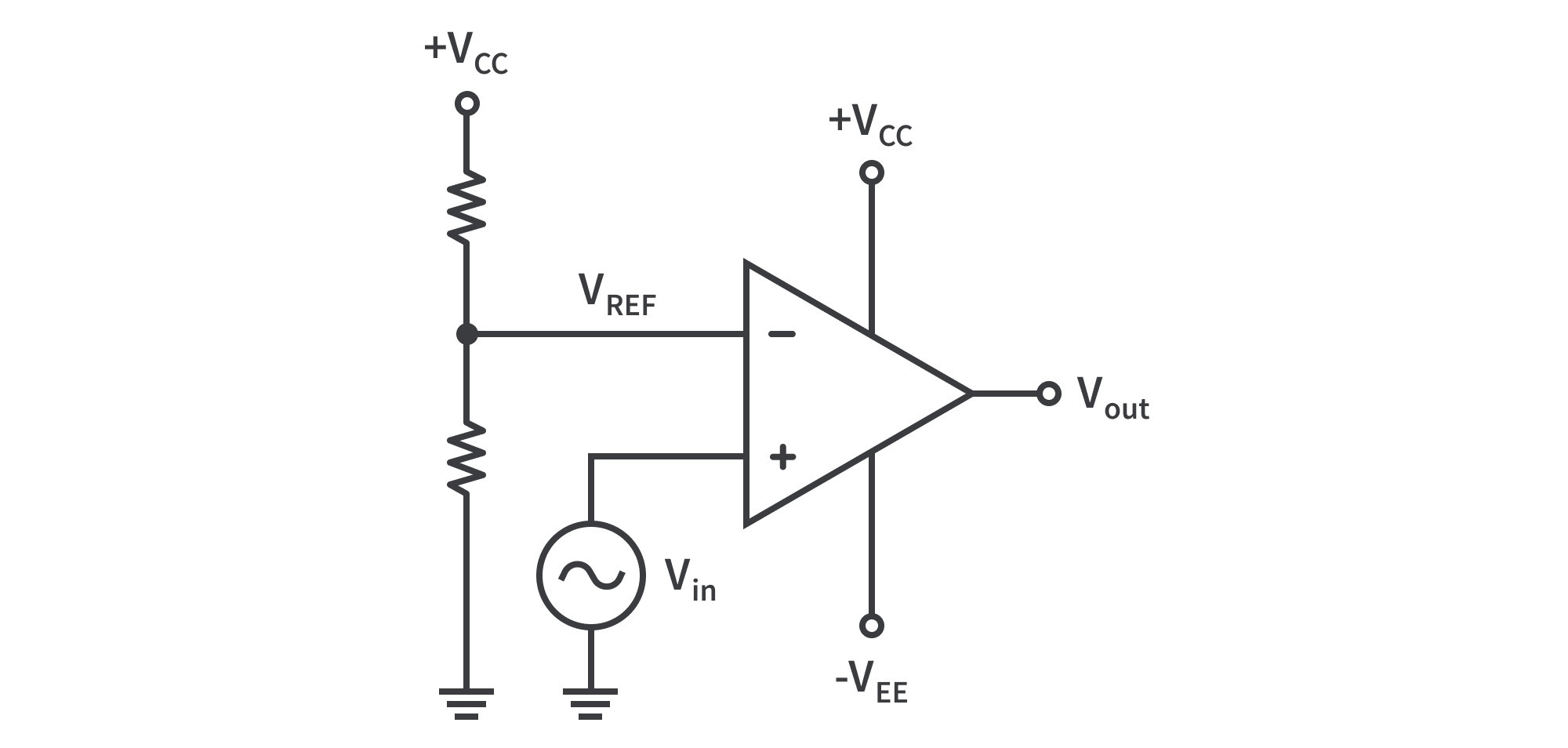What is the role of a comparator in electronic circuits, and how does it differ from an OPAMP?

A comparator and an operational amplifier (op-amp) are both essential components in electronic circuits, but they serve different purposes.
- Role of a Comparator: A comparator is a device that compares two voltages and produces a digital output based on the comparison. It determines whether one voltage is greater than, equal to, or less than the other. The output of a comparator is typically a binary signal, representing the result of the voltage comparison.
The main function of a comparator is to make decisions or perform switching operations based on voltage levels. It is commonly used in applications such as analog-to-digital converters, voltage level detection, waveform shaping, and other circuits where precise voltage comparisons are required.
Comparators have a high gain and are designed to operate in either of two states: saturated positive or saturated negative. When the voltage at the non-inverting input (+) is higher than the voltage at the inverting input (-), the output saturates to a positive voltage level. Conversely, if the voltage at the inverting input (-) is higher, the output saturates to a negative voltage level. The output remains in either of these states until the inputs change and the voltage comparison result flips.
- Role of an Operational Amplifier (Op-Amp): An operational amplifier, on the other hand, is a high-gain voltage amplification device that amplifies the voltage difference between its two input terminals. Op-amps are primarily used to perform mathematical operations, such as addition, subtraction, integration, differentiation, and filtering, in electronic circuits.
Op-amps have a differential input configuration, typically with two inputs: inverting (-) and non-inverting (+). The output voltage of an op-amp is the amplified difference between these two input voltages, multiplied by the open-loop gain of the amplifier.
Unlike a comparator, an op-amp is designed to operate in a linear region, providing a continuous output voltage that is proportional to the input voltage difference. Op-amps are widely used in various applications, including amplifiers, filters, oscillators, voltage regulators, and active signal processing circuits.
In summary, a comparator is primarily used for voltage level comparison and produces a digital output, whereas an op-amp amplifies the voltage difference between its inputs in a linear manner, enabling various mathematical operations and signal processing functions.

